Preserving the Art of the Written Word, One Vintage Keystroke at a Time
Setting out to buy herself a manual typewriter, an AI-weary writer visits the last full-time typewriter repair shop in Washington state—and encounters a time machine, of sorts.
Preserving the Art of the Word, One Vintage Keystroke at a Time
Story by
Bremerton, WA, is a quaint, portside city with a walkable downtown, but to find the Bremerton Typewriter Company, you need to know where you’re going. Though the shop has hundreds of refurbished typewriters for sale, there’s no obvious storefront—not even a sign on the building.
To get to it, I had to weave through construction barriers, pass some otherwise friendly-looking folks dressed as demons (there was a Krampus convention in town), enter building 245, locate the directory, and take the elevator to the 5th floor. When the elevator doors open, the place is unmistakable: A 1916 Royal Model 10 typewriter stands sentry outside the open door. It was a bit like traveling through a portal and landing in an alternate universe.
When I launched this expedition, driving an hour from my home in Olympia, I was determined to find a manual typewriter for daily use. My desire to reconnect to old technology wasn’t based in any longing for the past, but rather, for the hyper-present: a place that isn’t owned by any mega-corporation; a place where words land on an actual page, not in the Cloud; and where pages can’t be mined for data or scraped by bots.
Increasingly, I’m disgusted by the ubiquity of AI, and the ways it encourages us to bypass deep thought and the messiness of the creative process. As a community college teacher, I’ve witnessed students turn in papers that are so clean and generic—so soulless—there’s no way a human wrote them. I’ve watched the freelance writing market—my other job—dry up, while at the same time noticing (with mounting fury) that clicking a link to an “article” now commonly leads to some drivel written by bots and edited by no one. On a smaller scale, I worry about the ways digital devices have rewired my own brain. As a remedy, I’m interested in how analog writing tools might help restore what I’ve lost. And so, I stepped into the Bremerton Typewriter Company’s vestibule.
To find the owner, Paul Lundy, I follow his voice past shelves upon shelves of typewriters arranged side-by-side in their cases, to an adjacent workshop where he is cleaning parts beneath a chemical hood. When I tell him that I now understand why his website has 13 pages of active “for sale” listings, he says that he actually rents five more storage spaces for back stock—a situation that does not thrill his wife.
Lundy came to own this business because he read a 2014 Seattle Times article about Bob Montgomery, the company’s former original owner and the area’s “last full-time typewriter repairman.” The article repeatedly insinuated (indelicately) that when Montgomery passed on—he was 92 at the time—his legacy would die with him. Lundy, intrigued, visited the shop and hit it off with Montgomery. Eager to hear the nonagenarian's stories, Lundy regularly visited on Saturdays and took Montgomery out to lunch. He began spending weekends learning typewriter repair, and helping Montgomery catch up on his backlog of orders. Eventually, Lundy left a stable job in facilities management to take over the shop full-time.
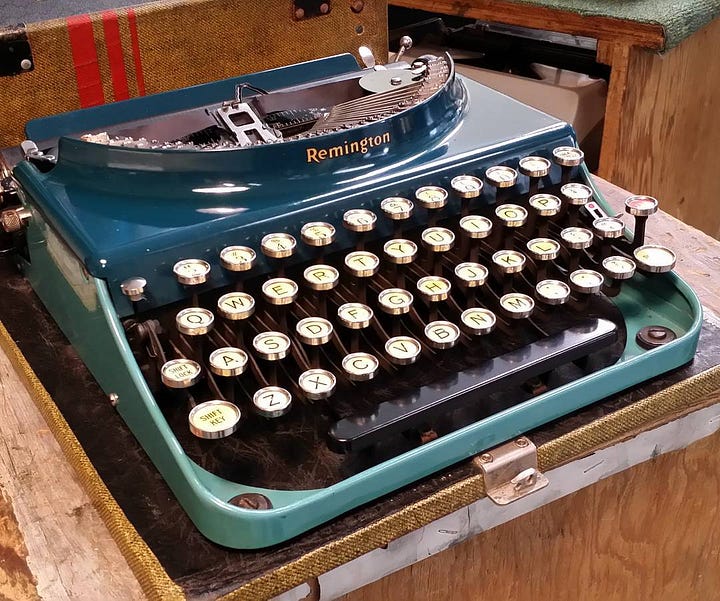
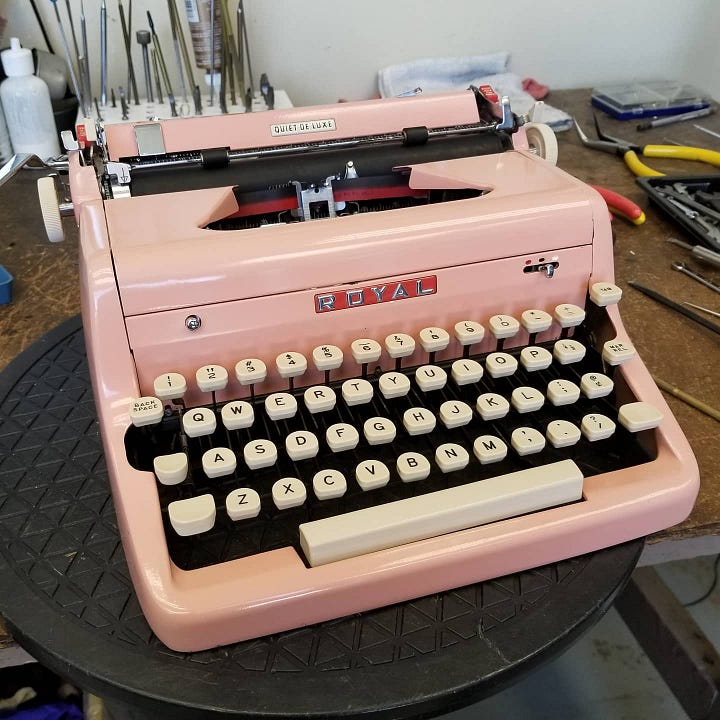
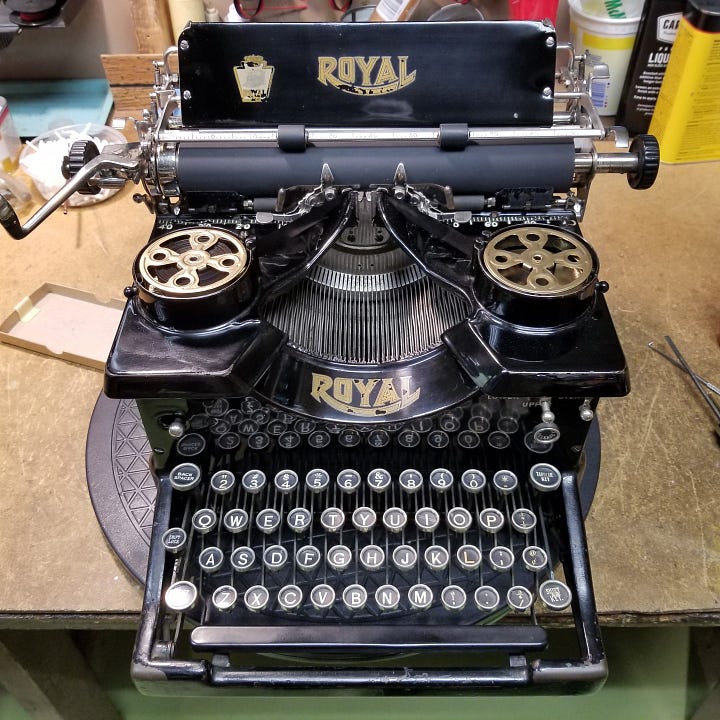
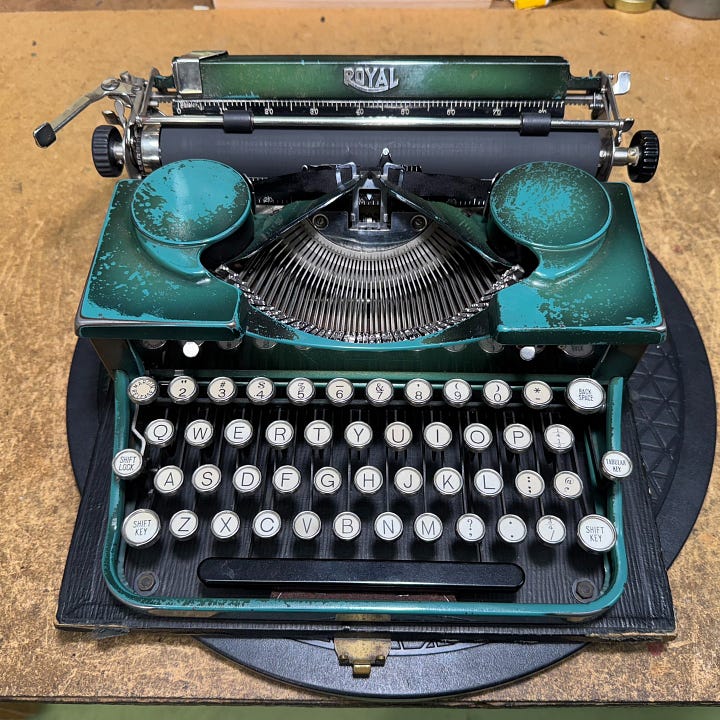
As we chatted, Lundy invited me to browse a bright showroom with a view of the Olympic Mountains, and shelves of shiny, refurbished vintage typewriters for sale. Lundy makes a point of selling a variety of these machines, ranging from some standard models for less than $100, to collectible antiques that approach $1,000 apiece. When I first saw some of these models listed online, I almost swooned. In person, that response was even stronger: I was flooded with desire to lay my hands on one.
Lundy encouraged me to take my time. I tried at least a dozen typewriters and realized I’d never typed on a manual model before. Making words was labor. Each time I stretched my pinky to hit the ‘A’ key, I thought of my teenage son practicing chords on his guitar. I liked thinking of the typewriter as an instrument, one that would demand more dexterity than my laptop.
As I tapped away, a family of three dropped in to pick up their manual Hermes with mint-green keys, dropped off for repair some weeks before. Apparently, the husband had originally brought the typewriter home on a whim and placed it in the family room next to a box labeled “Suggestions.” It was meant as a joke; however, every morning thereafter, the parents woke to the sound of their school-age daughter studiously typing.
Typewriters evoke a lot of nostalgia; yet, as a practical tool for putting thoughts on a page, they’ve never entirely gone away—as demonstrated by the Bremerton Typewriter Company’s nearly eight decades in business. They also seem to appeal to those who have no direct memories of them. Lundy says it’s about converting a thought to print with no intermediary—just mind to finished product. “I’d hate to say that it ‘frees your mind’, because sometimes it freezes your mind.”
If typewriters can facilitate more expansive thinking, it’s easy to see how that appeals to Lundy, who keeps a stack of copies of “On Tyranny,” Timothy Snyder’s 2017 book on resisting authoritarianism in the shop, and gives them away to anyone who will take one. (If you want a fun time, I recommend searching his most recent listings for anti-fascism Easter eggs.)
Three hours later, I left the Bremerton Typewriter Co. with a 1963 Olympia SM5 in its sleek, original case. To install it in my writing studio, I only needed to place it on the desk and feed a blank sheet of paper through the platen—no software to download, no backup package to transfer. So far, I’ve typed some to-do lists (they look so reassuringly tidy), letters (so much care conveyed in a typewritten missive), scattered ideas, and rough drafts. I’ve already come to love the ding that warns me when I’m nearing the end of a line, and the tasks of rolling the platen and returning the carriage. After years of battling with digital formatting tools, it is a joy to manually lay out words wherever I want them. There’s only one small technical difficulty: I’m still working on the finger strength to cleanly type an ‘A’.
If you enjoyed this story, you might also like…
The Moral Lessons of a Fountain Pen
by
From timeless designs to artful inks, fountain pens offer much more than a simple method for putting words on paper: They illustrate the lasting values of craftsmanship.
Craftsmanship Magazine focuses on master artisans and innovators whose work informs our quest: to create a world built to last. In addition to our Substack offerings, you’ll find a rich archive of stories, podcasts, photo essays, and documentary shorts on our free website—along with community resources like our Artisans’ Directory, our guide to U.S.-based craft & folk schools, and much more.


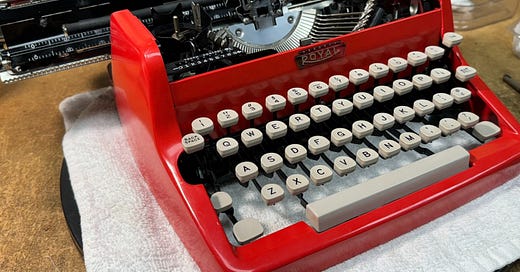




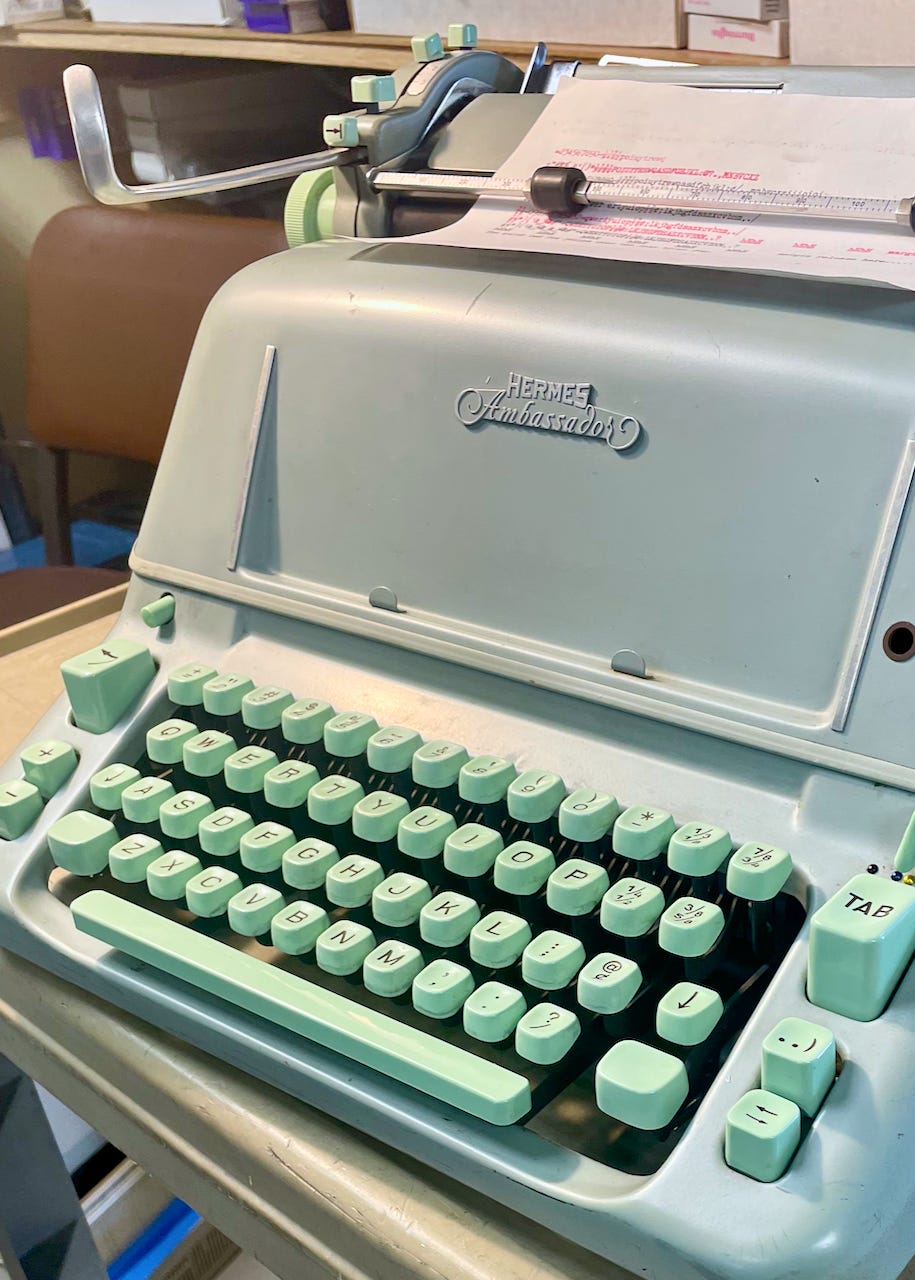

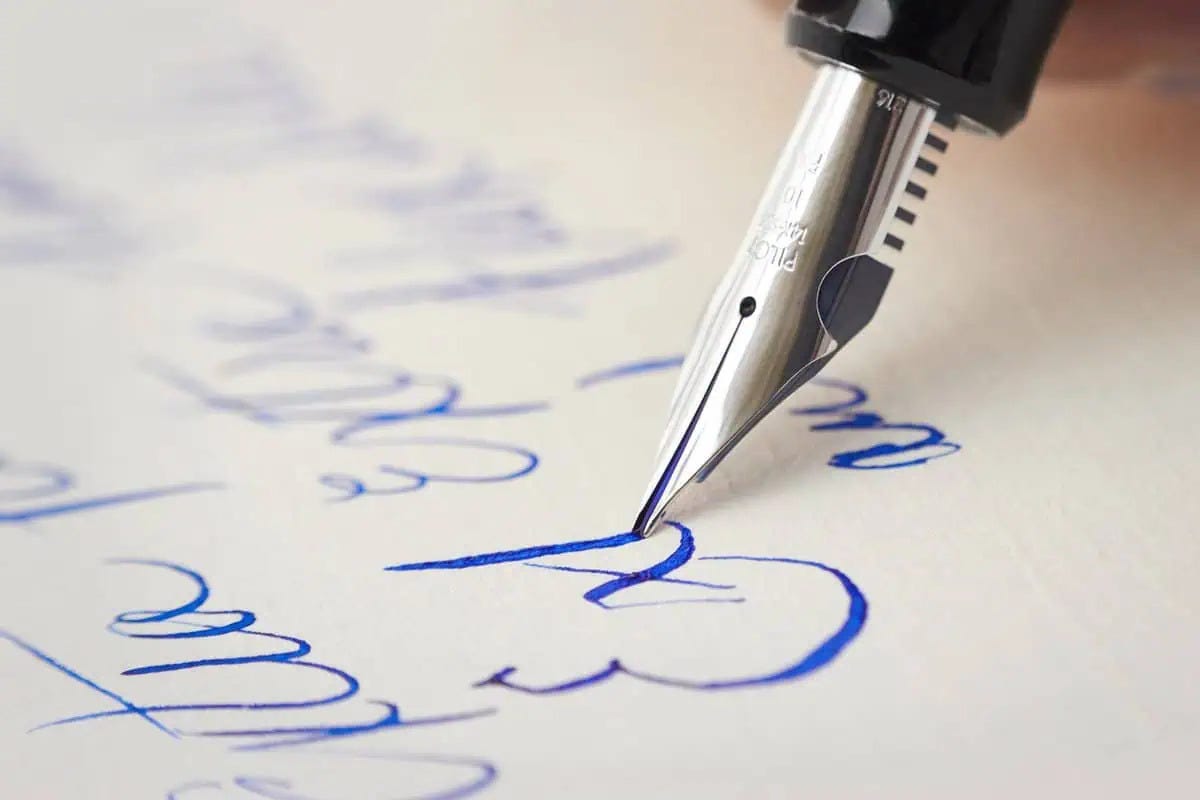


I need to break out my typewriter! Thanks for this post. Love that there are still craftsmen who know how to repair typewriters.
Wonderful story. You brought back memories of high school typing class. We had 2 rows of manual typewriters and one row of electric. We would alternate every week. My typing speed would always drop off the first time on either machine until I had adjusted my "touch." My mother insisted my sisters and I take typing in high school so we would "always have a skill to fall back on when looking for a job." (This was over 50 years ago - although I was also able to be in our high schools first computer class my senior year.) How prophetic she was, I was able to transition easily to a PC or MAC when that time came and was able to find paying employment until I retired 2 years ago.